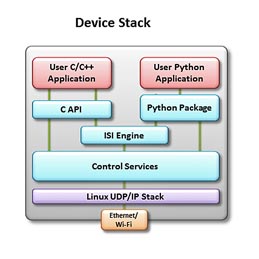BY VARUN NAGARAJ
Senior VP and GM
Internet of Things
Echelon, www.Echelon.com
In the overall Internet of Things (IoT), most of the emphasis has been on wireless communications, with plenty of opinions on the suitability of various transport options. For example, some IoT applications may benefit from leveraging existing Wi-Fi/IEEE 802.11 infrastructure; some may require a mesh-based approach such as IEEE 802.15.4 to use lower power but still get coverage; some applications looking for interoperability could benefit from using ZigBee profiles on top of 802.15.4; others may benefit from energy harvesting wireless technologies such as EnOcean; and still others might be best suited to using a point-to-point cellular connection approach.
To date, however, most discussion of the IoT has focused on what might be termed the “human IoT”: cloud- or server-mediated communications in which human users are integral to the interaction. More recently, industrial Internet and industrial IoT (IIoT) concepts have gained prominence.
Industrial strength
The IIoT can be seen as the next generation of traditional control networking, which has been in place for a very long time, in applications such as building and assembly line automation, lighting, commercial transportation, smart cards, test and measurement, and the energy grid.

Fig. 1: Internet Protocol for a combination of wired and wireless.
But industrial environments are frequently not conducive to wireless communications. Dust, smoke, extremely hot or cold temperatures, electrical noise levels, vibration, and locations below ground or surrounded by thick concrete structures all diminish the reliability of wireless communications — and reliability along with deterministic behavior are imperative for most industrial applications.
Because of the close linkage between electronic device architectures and their transport layers and communications protocols, developers traditionally have had to choose between making either wired or wireless products. And for many industrial applications, the demand for wireless products has been too low to justify their development.
Adding IP to the mix
The new twist to these calculations is IP (Internet Protocol), which, when driven to the device and field bus level, expands the options available to developers of industrial and commercial applications. IP can act as an integrating technology that allows the same device on a field bus to run multiple communications protocols and to use multiple transport layers.

Fig. 2: The software stack for the device side.
With IP-based applications, within an IP-centric application development framework, designers of industrial products now can leverage a single development effort in multiple ways. With relatively simple tweaks, any given device can be repurposed into versions that run on different hardware links and transports.
As a result, extending IP to the endpoint will change the market dynamics for application developers. In the IIoT, the implications will include making it cost-effective to include wireless support along with wired (Ethernet, Powerline, RS-485, Free Topology, etc.) with a single-device development effort (see Fig. 1 ).
Wireless/wired mix
When offering wireless options becomes more financially feasible for device makers and application developers, the rigid lines between wired and wireless communications will begin to soften. Even IIoT environments not ready to switch completely to wireless transport might be able to take advantage of wireless communications for a few processes, or at some times of the day, or under particular circumstances. The keys will be the extension of IP all the way to the end device level, plus the availability of IIoT-specific technology platforms.
One example
One example of available software is the IzoT reference implementation for the popular Raspberry Pi development platform that was recently introduced by Echelon (see Fig. 2). This software can be used to develop Pi-based wired (e.g., Ethernet) and wireless (e.g., Wi-Fi) devices. Later in 2014, Echelon will deliver a compact IzoT-enabled Wi-Fi system-on-a-module suitable for developers of industrial devices, followed by a range of wired and wireless IzoT-enabled chips, modules, routers, and software.
Advertisement
Learn more about Echelon





